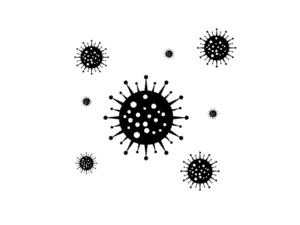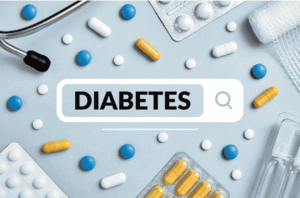Chronic obstructive pulmonary disease (COPD)
Chronic obstructive pulmonary disease (COPD) remains a devastating lung disease, affecting 480 million people worldwide (WHO 2025). This progressive chronic respiratory disorder combines chronic bronchitis and emphysema, causing irreversible airflow obstruction and reduced pulmonary function. With COPD now the leading cause of death globally, surpassing stroke, implementing GOLD 2025 protocols is critical.
COPD
COPD is caused by chronic inflammation of the airways, leading to narrowing and reduced air movement in and out of the lungs. Over time, it causes permanent damage and is often triggered by factors like smoking, air pollution, and repeated respiratory infections.
Main Forms of COPD
Chronic bronchitis: Defined by a persistent cough with mucus (sputum), excess mucus buildup, and airway inflammation.
Emphysema: Characterized by destruction of lung tissue and alveoli (air sacs), reducing the surface area for oxygen exchange.
Signs and Symptoms of COPD
Recognizing COPD symptoms early can help manage the condition more effectively. Symptoms often develop gradually and worsen with time.
Common symptoms of COPD include:
Persistent cough
Shortness of breath (especially during activity)
Mucus (sputum) production
Wheezing
Chest tightness
Frequent respiratory infections
Fatigue
Many people delay seeking treatment until lung function is significantly impaired.
What Causes COPD?
Common causes of COPD and risk factors include:
Smoking – the leading contributor to chronic obstructive pulmonary disease
Long-term exposure to air pollution
Occupational exposure to dust, fumes, or chemicals
Genetic factors, such as alpha-1 antitrypsin deficiency
History of asthma or other respiratory illnesses
These factors promote chronic inflammation, tissue damage, and irreversible lung deterioration.
Bronchospasm vs. COPD: Key Differences
| Aspect | Bronchospasm | COPD |
|---|---|---|
| Definition | Acute airway narrowing due to smooth muscle contraction | Chronic lung disease with persistent airflow obstruction |
| Duration | Temporary (minutes-hours) | Permanent and progressive |
| Primary Mechanism | Reversible muscle constriction | Irreversible lung damage (emphysema/chronic bronchitis) |
| Triggers | Allergens, smoke, exercise, stress | Smoking, air pollution, genetics |
| Relationship | Symptom/event occurring in diseases like COPD or asthma | Disease that may include bronchospasm |
| Reversibility | Often fully reversible with bronchodilators | Partially reversible at best |
| Pathology | Functional spasm | Structural destruction + inflammation |
Diagnosing Chronic Obstructive Pulmonary Disease
A proper diagnosis of COPD includes clinical assessment and tests to measure lung function:
Spirometry (to measure forced expiratory volume in one second)
Chest X-rays or CT scans
Arterial blood gas analysis
Full pulmonary function tests
The Lung Health Study has shown that early diagnosis is essential for preserving respiratory function and delaying disease progression.
COPD Treatment: Managing Chronic Obstructive Pulmonary Disease
Bronchodilators: Relax airway muscles to enhance airflow.
Inhaled steroids: Reduce airway inflammation and help prevent exacerbations.
Phosphodiesterase-4 inhibitors: Minimize inflammation and are especially useful in severe cases.
Pulmonary rehabilitation: A program combining exercise, education, and counseling to improve breathing and stamina.
Oxygen therapy: For patients with advanced lung damage and low oxygen levels.
Noninvasive positive pressure ventilation (NPPV): Used in acute respiratory failure during exacerbations.
Lung transplant: An option in end-stage COPD.
Managing COPD Exacerbations
An exacerbation is a sudden worsening of COPD symptoms, such as cough, shortness of breath, or mucus production.
Triggers include:
Viral or bacterial respiratory infections
Exposure to cold air or pollutants
Allergens
Treatment of exacerbations includes corticosteroids, antibiotics, and sometimes hospitalization. Early detection and management are vital to prevent exacerbations and reduce the risk of death or rapid lung decline.
Preventing Exacerbations and Slowing Disease Progression
Prevention plays a crucial role in managing COPD:
Quit smoking completely
Get vaccinated (influenza, pneumococcal)
Avoid air pollution and occupational hazards
Exercise regularly to maintain lung health
Adhere to prescribed COPD treatment
Monitor symptoms and report any changes
These actions help reduce exacerbation risk and preserve remaining lung function.
COPD vs. Asthma:
While both COPD and asthma affect the airways, asthma is typically reversible and begins earlier in life. In contrast, COPD is progressive and mostly seen in older adults with a smoking history. Some individuals may exhibit features of both, known as asthma-COPD overlap syndrome (ACOS).
Living with COPD
To improve daily life with chronic obstructive pulmonary disease, patients should:
Enroll in pulmonary rehabilitation
Use prescribed medications regularly
Stay physically active within safe limits
Manage exacerbations promptly
Practice relaxation techniques to handle stress and anxiety
An individualized plan for chronic bronchitis, emphysema, or overlapping COPD conditions can greatly improve patient well-being.
Final Thoughts
Chronic obstructive pulmonary disease is a prevalent and life-altering lung disease. However, with early diagnosis, lifestyle adjustments, and proper treatment of COPD, many patients can lead fuller, more active lives. Work closely with your healthcare provider or respiratory specialist to manage your symptoms, avoid exacerbations, and maintain your lung health long-term.



